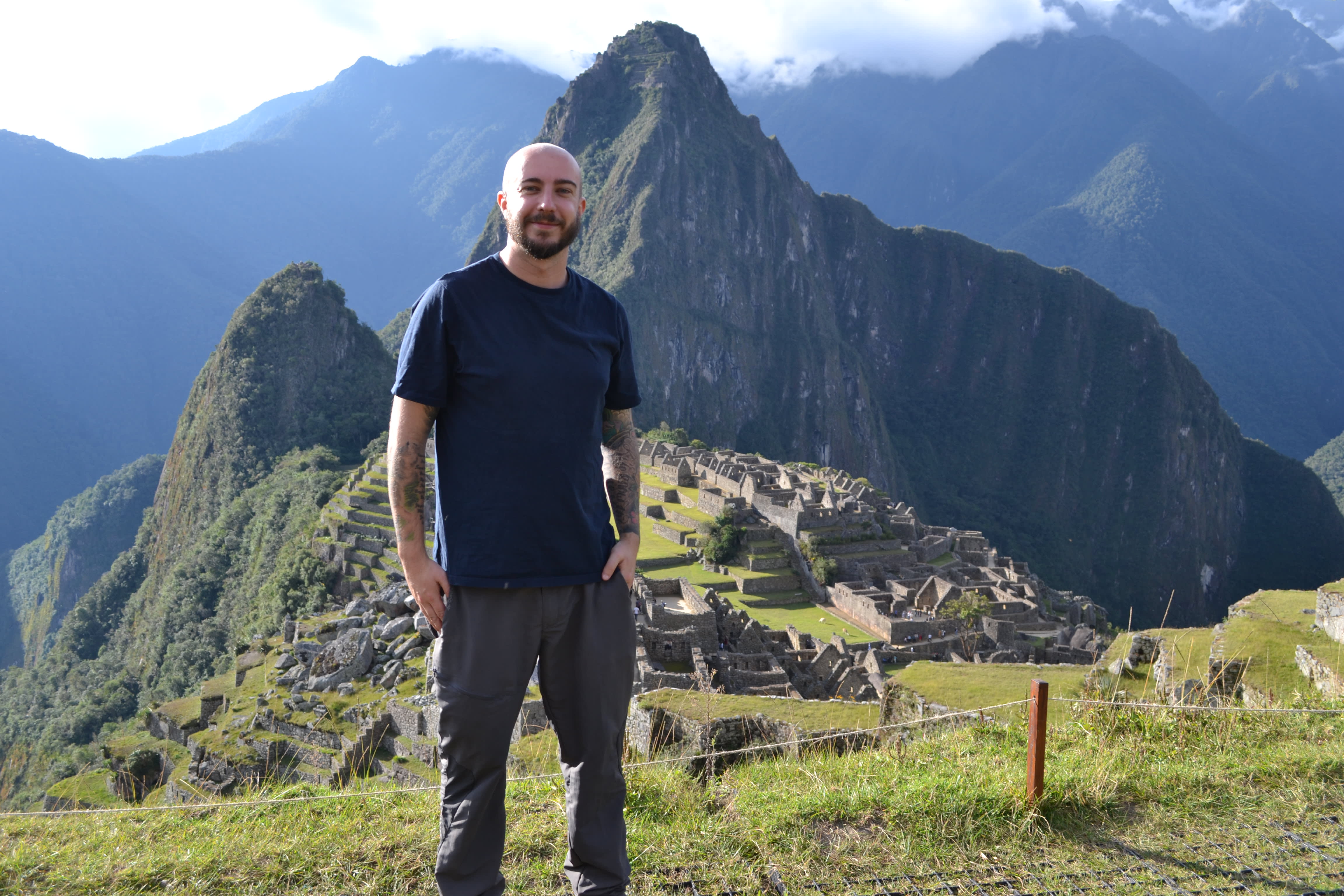
Amazing Andes: 5 Inca Trail Trekking Tips, From Someone Who’s Done It

Snaking through the towering Peruvian Andes to the once-lost citadel of Machu Picchu, the Inca Trail is a heady combination of crumbling ruins and mountain vistas, ending at one of the New Wonders of the World.
The classic four-day route takes you from the start point at Km82, along the Urubamba River, down the Inca Steps to Wiñay Wayna, and finally to Machu Picchu – with plenty to enjoy along the way.
But what’s it really like? Here, our Revenue Operations Manager, James Warren, shares the top things he learned about the route after joining our 15-day Inca Trail, Titicaca & Nazca adventure.
1. Train Before You Go

I was really busy at work before leaving for the trip, so I didn’t have much time to get a lot of fitness training in beforehand. I did hear many people saying they wish they had done more training before they left, so that’s a key thing to consider before you book this trip. Give yourself at least a couple of months to prepare. Two people in my group actually met before they went on the trip and ended up training together by taking walks through the Brecon Beacons in Wales.
Exodus insight: When you’re training for the Inca Trail, consider a mix of aerobic exercises and cardiovascular training to strengthen your endurance at high elevations. This could include hiking, running or jogging several times a week; cycling to improve stamina and leg strength; climbing stairs or using a stair climber machine to prepare for the steep ascents and descents.
2. Consider Your Kit

I travelled in June, which is wintertime in Peru, but the daily temperatures change a lot. It could be 22C (72F) at midday but get down to -2C (28F) in the campsites at night, so it’s all about bringing lots of layers.
The porters can help to carry your thermals, sleeping bag and pillow during the day, but in your small day bags I’d recommend carrying insect repellent, sunscreen, sunglasses, hats, waterproof ponchos/light rain jackets and sustainable water bottles.
I found it pretty easy to travel light, as you can rotate your base layers on the trail, and you’ll have a hot bowl of water when you arrive at the campsite, so you can have a quick wash with sustainable soap.
3. Trust Your Tour Leader

Our guide, William Mirano, who has been shortlisted for Exodus’s Leader of the Year Award, made the experience.
He grew up in Cuzco and is now raising his family there, so he had a real understanding of the Quechuan heritage and history behind the Inca ruins we saw on our four-day trek.
You just wouldn’t get that kind of insight if you were doing the trek solo, as you’d be trekking past them without knowing how they shaped the country’s history.
He even gave us a bottle of pisco to share when everyone finished Dead Woman’s Pass, which was the highest trekking point of the trip (4,100m/13,450ft above sea level).
He also organised a karaoke night for us in Aguas Calientes the day after we completed the Inca Trail, which kept the momentum of the trip going after the high of seeing Machu Picchu for the first time.
One woman in the group, Emma, was so impressed with William, she rang up the London office to see when he was leading another trip, so she could bring her parents along with her next time – that’s the kind of impact a great leader can have.
4. Lean on the Group When You Need

Everyone in our group, all 14 of us, were big motivators for completing the trail itself – everyone was cheering you on.
You could tell this trip meant a lot to certain people, which made that moment when you saw Machu Picchu come into view for the first time, particularly special. There were tears in some people’s eyes when they made it to the Sun Gate and everyone hugged each other.
For me, the adventure doesn’t mean anything if you do it alone.
5. Look Forward to the Food

All the food was delicious. I’m a vegetarian, and everyone was really well catered for – we had things like traditional quinoa soup, and they even made cakes for desserts – which is pretty impressive at such high altitudes!
I’d say the food was better than what we ate at restaurants in Cuzco. We had a three-course meal for dinner each evening prepared by the head chef and sous chef, who always got up earlier than the group to make sure they reached the next campsite before us so they could set up the kitchen tent ready for our arrival.
If you’re keen to follow in James’ footsteps and join our expert guides on the Inca Trail, take a look at our Inca Trail, Titicaca & Nazca trip or check out our other Inca Trail adventures.


